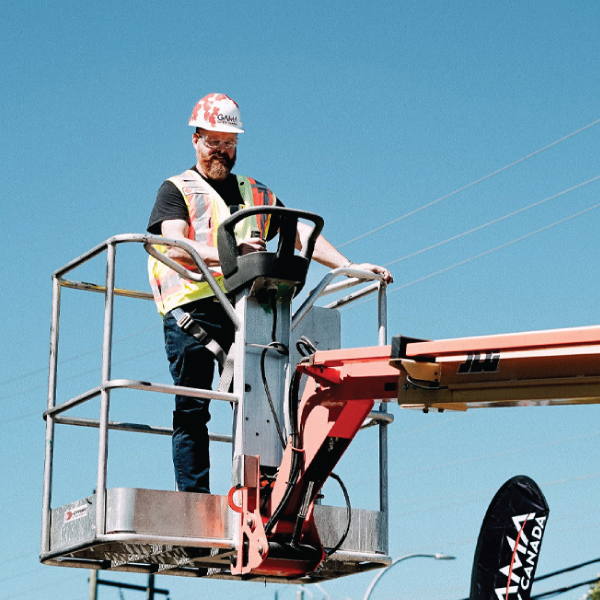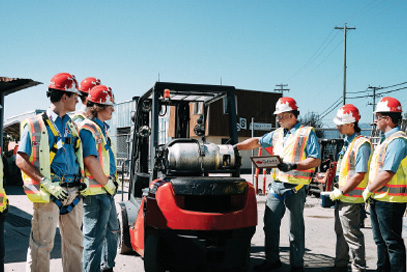Best Practices for Operating
Boom Lifts in High-Reach Environments.
Boom Lift, provide workers with the ability to access difficult-to-reach areas, such as building facades or overhead installations. To ensure safety, workers must be trained to use these machines correctly, including securing themselves with fall protection gear, checking for stability, and inspecting the lift before use.
Best Practices for Operating
Boom Lifts in High-Reach Environments.
Boom Lift, provide workers with the ability to access difficult-to-reach areas, such as building facades or overhead installations. To ensure safety, workers must be trained to use these machines correctly, including securing themselves with fall protection gear, checking for stability, and inspecting the lift before use.
OUR PARTNERS AROUND THE WORLD
OUR PARTNERS AROUND THE WORLD
OUR PARTNERS AROUND THE WORLD
OUR PARTNERS AROUND THE WORLD
OUR PARTNERS AROUND THE WORLD
OUR PARTNERS AROUND THE WORLD
OUR PARTNERS AROUND THE WORLD
OUR PARTNERS AROUND THE WORLD
OUR PARTNERS AROUND THE WORLD
Safe Operation of of Stand Up Reacher for Improved Material Handling.
The Stand-Up Reacher is a valuable piece of equipment for reaching high shelves or picking orders in a vertical storage system. Operators should be trained to safely maneuver the machine, ensuring that they maintain stability and balance while reducing the risk of tipping or accidents.
OUR PARTNERS AROUND THE WORLD
OUR PARTNERS AROUND THE WORLD
OUR PARTNERS AROUND THE WORLD
OUR PARTNERS AROUND THE WORLD
OUR PARTNERS AROUND THE WORLD
Boom Lift
Operation
Learn the basic steps for safe boom lift use, including platform controls, base setup, and pre-operation inspections.
Safe Elevation
and Descent
Master vertical and diagonal movement with boom lifts, including fall prevention, stability, and descent protocols.
Boom Lift Safety Resources
Federal regulations covering the safe operation of boom lifts in Canada.
Guidance on safe operation, hazards, and precautions specifically for boom lifts.
Additional guidance covering safe use practices and hazard mitigation for boom lifts.
Comprehensive guidance on safe operation, inspection, and hazard prevention for boom lifts.
Updated section providing best practices and safety requirements for boom lift operators.
Overview of safe operation procedures, hazard awareness, and training considerations for boom lifts.
Boom Lift Essentials:
Staying Safe While Operating Elevated Access Equipment
Operating a Boom Lift demands precision, awareness, and strict adherence to safety protocols. These versatile machines are designed to access elevated and hard-to-reach areas in construction, maintenance, and industrial settings.This essential training provides workers with the knowledge to safely maneuver Boom Lifts, recognize hazards, and follow operational best practices.

BOOM LIFT
Boom Lift Essentials:
Safe Operation of Elevated Access
Operating a Boom Lift requires careful planning, skill, and a strong understanding of safety protocols. These versatile machines provide access to high and hard-to-reach areas, making them essential for construction, maintenance, and industrial work at elevation.
This training covers key safety topics such as boom stability, fall protection, ground conditions, and safe maneuvering around obstacles and overhead hazards. Operators learn how to conduct pre-use inspections, manage risk, and follow Canadian safety regulations like CSA B354 and local OHS requirements.
By mastering the controls and safety systems of a Boom Lift, workers can complete elevated tasks with greater efficiency and reduced risk. Proper training ensures not only legal compliance but also the protection of everyone on the job site.
BOOM LIFT Definition
A Boom Lift is a type of aerial work platform (AWP) used to lift workers, tools, and materials to high or difficult-to-access areas. It consists of a platform or bucket attached to a hydraulic arm that can extend both vertically and horizontally. This gives it a unique advantage over other lifting equipment like Scissor Lifts, which only move straight up and down.
Boom Lifts come in two main types: articulating (also known as knuckle booms) and telescopic (or straight booms). Articulating Boom Lifts have multiple joints, allowing the arm to bend around obstacles, while telescopic Boom Lifts offer a longer, straight reach, ideal for tasks requiring height but not complex maneuvering.
Because of their flexibility, Boom Lifts are commonly used in construction, window washing, signage installation, and facility maintenance. They are ideal for tasks where space is tight or when work needs to be performed at height with precision and mobility.
A Boom Lift functions by using a hydraulic or electric-powered system to extend its arm and elevate the platform or basket. The lift’s base provides stability, while the arm reaches out and up, allowing workers to access areas several meters off the ground. Control panels on the platform and base allow for precise operation.
In articulating Boom Lifts, the boom segments can move independently, allowing operators to navigate up and over obstacles like buildings or machinery. Telescopic models, on the other hand, offer a direct, linear extension that is perfect for reaching high vertical points, such as rooftops or towers.
The platform is equipped with guardrails, fall protection anchor points, and emergency controls to ensure operator safety. All Boom Lift movements vertical, horizontal, and rotational are smooth and controlled, ensuring stability and reducing the risk of tipping or loss of balance.
The two primary types of Boom Lifts are Articulating Boom Lifts and Telescopic Boom Lifts. Each serves a different purpose based on the job requirements. Articulating booms are often used where precision is key and space is limited, while telescopic booms are ideal for jobs that require reaching great heights in open areas.
Articulating Boom Lifts feature multiple hinge points that allow the boom to bend and maneuver around obstacles. This makes them especially useful in urban environments, industrial plants, or work sites with structures in the way.
Telescopic Boom Lifts, by contrast, extend in a straight line and are often mounted on mobile chassis for easy relocation. These are commonly used in construction, bridge work, and outdoor maintenance, providing fast and direct access to elevated job sites.
Boom Lifts are widely used in industries where elevated access is required in complex environments. Common applications include building construction, exterior painting, electrical line installation, tree trimming, and maintenance on large structures such as bridges or stadiums.
In facility management, Boom Lifts help workers reach high ceilings or light fixtures safely and efficiently. Utility companies rely on Boom Lifts to perform maintenance on telephone poles, traffic lights, and overhead lines in a secure and stable manner.
Because of their long reach and flexibility, Boom Lifts are also favored in film and entertainment industries for lighting and camera placement, as well as in warehouses for high-rack inventory work. Their mobility and versatility make them indispensable in both indoor and outdoor settings.
The primary difference between Boom Lifts and other lifting equipment lies in their reach and mobility. Unlike Scissor Lifts, which only provide vertical elevation, Boom Lifts can extend outward and upward, allowing access to difficult or obstructed locations.
Boom Lifts also offer rotational movement, with many models capable of rotating the arm 360 degrees. This feature allows operators to cover a larger work area without needing to reposition the base, saving time and increasing efficiency.
Another distinction is height capability. Boom Lifts generally reach much higher than Scissor Lifts, with some models exceeding 150 feet. This makes them essential for high-rise construction, large-scale industrial jobs, and any task requiring elevation beyond the capabilities of standard platforms.
Training is critical for the safe operation of Boom Lifts due to the complex movements and high-risk environments in which they are used. Operators must understand not only how to control the lift, but also how to assess environmental conditions and identify hazards such as power lines, unstable ground, or overhead obstructions.
Certification programs teach operators how to perform daily pre-use inspections, calculate safe load limits, and use fall protection equipment correctly. They also cover emergency response protocols and how to avoid common incidents like tip-overs, entrapment, or overloading.
Proper training ensures that Boom Lift operators can work safely and in compliance with Canadian safety standards such as CSA B354. It also reduces liability for employers and contributes to a culture of safety on construction sites, warehouses, and industrial workplaces.
BOOM LIFT Legislation
Yes, Boom Lifts are strictly regulated in Canada as part of the Mobile Elevating Work Platforms (MEWPs) category. These machines are subject to federal and provincial Occupational Health and Safety (OHS) regulations to ensure safe use in workplaces. The overarching goal is to prevent falls, collisions, tip-overs, and other serious incidents.
Nationally, the CSA B354 Series outlines the technical and operational standards for Boom Lifts, including design, maintenance, inspection, and training. These standards are legally recognized across Canada and integrated into regional safety codes. Each province such as Ontario, Alberta, and British Columbia has its own additional guidelines that must be followed at the job site.
Employers are responsible for ensuring that Boom Lifts are used in compliance with all applicable laws. This includes maintaining proper documentation, training operators, and conducting regular inspections. Non-compliance can result in significant penalties, site shutdowns, or serious injury to workers.
Canadian law requires that all Boom Lift operators be adequately trained and certified before using this equipment. The training must include both theoretical instruction and hands-on practical experience, following the requirements outlined in CSA B354.8 and enforced through provincial safety legislation.
Operators must be trained on topics such as hazard recognition, emergency procedures, machine limitations, proper use of personal protective equipment (PPE), and how to safely maneuver the lift in varied work environments. Training should be job-specific and provided by a qualified instructor or approved training provider.
Documentation of training must be kept on file and readily available for safety audits or inspections. Refresher training may also be required if a worker is involved in an incident, is found operating the Boom Lift unsafely, or if there are major changes to the equipment or job site.
Yes, Canadian legislation mandates that Boom Lifts must undergo a pre-use inspection every day before they are operated. These inspections help identify mechanical failures, structural damage, or safety system malfunctions that could lead to serious incidents on site.
Operators are required to complete a checklist that includes checks on tires, hydraulic systems, controls, emergency stop buttons, fall protection anchor points, and more. If any deficiencies are found, the lift must be removed from service until it is repaired by a qualified technician.
In addition to daily checks, Boom Lifts must receive periodic and annual inspections, as specified by the manufacturer and enforced under the CSA B354.6 standard. Failure to complete or document these inspections is a legal violation and can lead to fines or liability in case of an accident.
Yes, the use of fall protection is mandatory when operating a Boom Lift in Canada. Unlike Scissor Lifts, which may rely solely on guardrails, Boom Lifts often require additional fall protection equipment due to the extended reach and higher risk of ejection from the platform.
According to provincial OHS regulations such as WorkSafeBC Regulation Part 11, or Ontario Regulation 213/91, Section 26.1 workers must wear a full-body harness connected to a lanyard or self-retracting lifeline (SRL) anchored to a certified point on the platform. These measures protect the operator in case of sudden movement or equipment failure.
Employers are required to provide, inspect, and maintain fall protection equipment and ensure workers are trained in its proper use. Not using fall protection when required can lead to heavy fines and expose the company to legal and reputational damage.
Under Canadian law, employers have a duty to ensure that Boom Lift operations are carried out safely and in full compliance with all applicable legislation. This includes providing training, ensuring equipment is properly maintained, and verifying that the work environment is suitable for aerial lift use.
Employers must develop and enforce safe work procedures, conduct risk assessments, and provide personal protective equipment to operators. They are also responsible for documenting all training, maintenance, and inspection activities related to Boom Lifts.
If an incident occurs due to employer negligence such as lack of training, failure to inspect the lift, or ignoring environmental hazards they may face penalties from regulators such as WorkSafeBC, Alberta OHS, or Ontario’s Ministry of Labour. Employers can also be held civilly liable for injuries or fatalities caused by non-compliance.
Violating Boom Lift safety regulations in Canada can result in serious consequences, including fines, stop-work orders, legal action, and potential criminal charges in extreme cases. These penalties are designed to hold employers and workers accountable for creating safe working conditions.
Regulatory agencies such as WorkSafeBC, Alberta OHS, and Ontario’s Ministry of Labour routinely inspect job sites and review training records and equipment documentation. If deficiencies are found such as expired training, missing inspection logs, or lack of fall protection enforcement officers can issue immediate penalties or shut down operations.
In the event of an accident, non-compliance can also lead to increased insurance costs, loss of contracts, or damage to a company’s reputation. For this reason, staying up to date with Boom Lift legislation is not just a legal obligation but also a key part of managing risk and building a responsible workplace culture.
Other Courses You May Be Interested In.
Workers who complete BOOM LIFT training often continue their safety education with the following programs:"
More Courses
Online Courses
"Explore & Book Online Courses!
Have a Question?
"We’re here to help! Click the button to get in touch."


